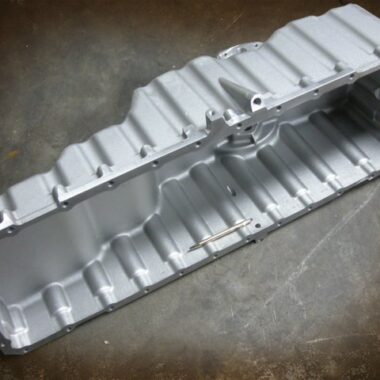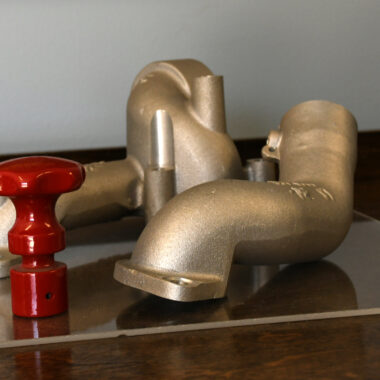Precision in Practice: The Art About Aluminum Casting
Precision in Practice: The Art About Aluminum Casting
Blog Article
Crafting Perfection: Just How to Attain High-Quality Aluminum Castings Whenever
In the world of aluminum casting, the quest of perfection is a constant journey that calls for a thorough strategy and a keen understanding of the intricacies entailed. Accomplishing consistent top notch aluminum spreadings requires an extensive grasp of the procedures, from choosing the suitable alloy to executing specific mold designs and diligently managing casting specifications. Nevertheless, real proficiency depends on the capacity to carry out these elements flawlessly to produce remarkable castings every single time. As we explore the ins and outs of crafting perfection in aluminum spreadings, uncovering the crucial techniques and strategies that lead to flawless results ends up being extremely important for those aiming for quality in this specialized field.
Comprehending Light Weight Aluminum Casting Procedures
Aluminum casting processes, necessary in the production sector, entail the intricate change of molten aluminum into solid types with a series of very carefully regulated actions. Comprehending these procedures is vital to attaining high-quality aluminum spreadings regularly - about aluminum casting. The main methods utilized in aluminum casting are pass away spreading, sand spreading, and financial investment spreading

Each of these procedures has its benefits and is chosen based on factors like complexity, volume, and desired surface of the aluminum casting. about aluminum casting. Comprehending the ins and outs of these approaches is critical for manufacturers aiming to produce top quality aluminum castings consistently
Selecting the Right Light Weight Aluminum Alloy
Picking the proper aluminum alloy is a crucial decision in the production of high-grade light weight aluminum spreadings. The choice of alloy substantially affects the residential properties and attributes of the end product. Various aluminum alloys offer differing levels of toughness, rust resistance, machinability, and thermal conductivity. When selecting a light weight aluminum alloy for casting, it is necessary to take into consideration the specific demands of the application to make certain optimal efficiency.
One of one of the most commonly utilized light weight aluminum alloys for casting is A356. This alloy supplies excellent castability, high stamina, and excellent corrosion resistance, making it ideal for a wide variety of applications. 6061 light weight aluminum alloy is preferred for its superior weldability and great mechanical buildings. For applications requiring high strength, 7075 aluminum alloy is a prominent selection due to its outstanding strength-to-weight proportion.
Along with mechanical homes, factors to consider such as expense, availability, and post-casting processes should likewise affect the choice of the appropriate aluminum alloy. By very carefully evaluating these variables, producers can guarantee the production of premium aluminum spreadings that meet the desired requirements.
Carrying Out Proper Mold Layout
Establishing an efficient mold layout is crucial for ensuring the effective manufacturing of top notch light weight aluminum castings. Proper mold and mildew layout plays a considerable function in achieving the desired features of the last product. To implement an effective mold and mildew design, factors such as product flow, cooling prices, and part geometry must be meticulously thought about.
One key facet of mold and mildew design is making certain appropriate filling and solidification of the light weight aluminum within the mold cavity. This includes developing jogger and gating systems that assist in smooth steel circulation and protect against Visit Your URL flaws such as air entrapment or incomplete filling. Furthermore, incorporating air conditioning networks right into the mold layout helps manage solidification prices and minimize the threat of porosity or shrinking defects.

Controlling Casting Parameters

Ensuring Post-Casting High Quality Checks
To keep the premium quality of aluminum spreadings, extensive post-casting quality checks are important. After the spreading procedure is completed, it is crucial to make sure that the end products meet the preferred standards and specs. Among the primary top quality checks involves checking the surface area finish of the spreadings to recognize any flaws such as porosity, cracks, or surface abnormalities. This aesthetic evaluation is usually supplemented by non-destructive testing techniques like ultrasonic screening or dye penetrant evaluation to identify internal defects that might endanger the integrity of the casting.
Dimensional accuracy is another crucial element that needs to be confirmed throughout post-casting top quality checks. Dimensions of vital measurements and resistances need to be required to validate that the spreadings comply with the required specifications. Additionally, mechanical homes such as firmness, tensile stamina, and effect resistance may need to be evaluated via product screening to make sure that the spreadings have the necessary toughness and durability for their desired application.
Verdict
In verdict, attaining high-grade light weight aluminum spreadings needs an extensive understanding of the casting processes, picking the proper alloy, creating molds effectively, regulating spreading specifications meticulously, and performing post-casting top quality checks vigilantly. By following these actions, makers can regularly produce light weight aluminum castings that meet the highest possible requirements of top quality and efficiency.
Achieving regular premium aluminum spreadings demands a thorough grasp of the procedures, from choosing the appropriate alloy to implementing accurate mold and mildew designs and diligently managing spreading parameters. The key methods made use of in aluminum spreading are pass away casting, sand spreading, and investment spreading.
Financial investment spreading, likewise known as precision spreading, involves producing wax patterns that are covered in ceramic to click for source form mold and mildews.Picking the suitable light weight aluminum alloy is a crucial choice in the manufacturing of top quality light weight aluminum spreadings.Guaranteeing exact control over spreading parameters is necessary for maintaining consistency and high quality in light weight aluminum spreading production.
Report this page